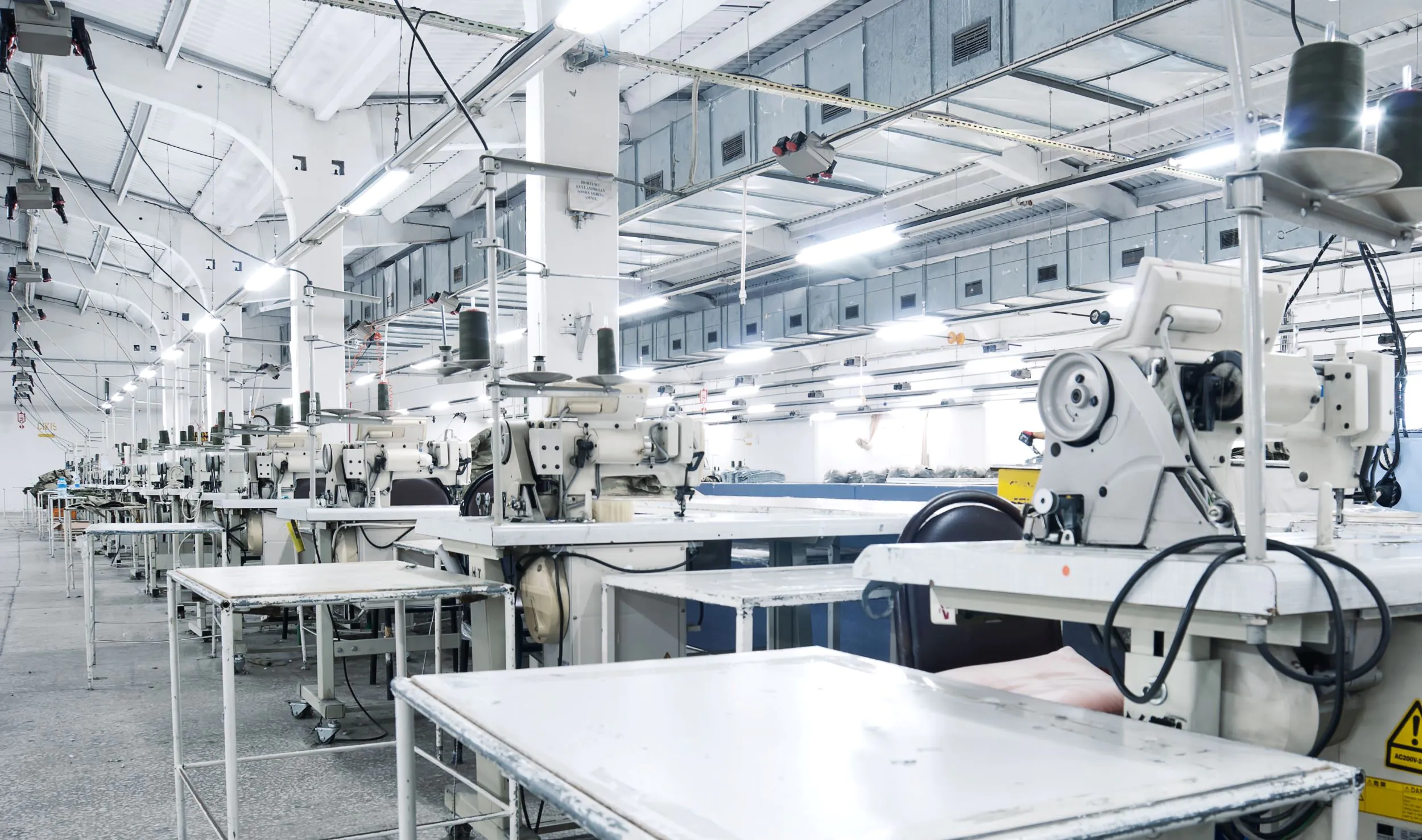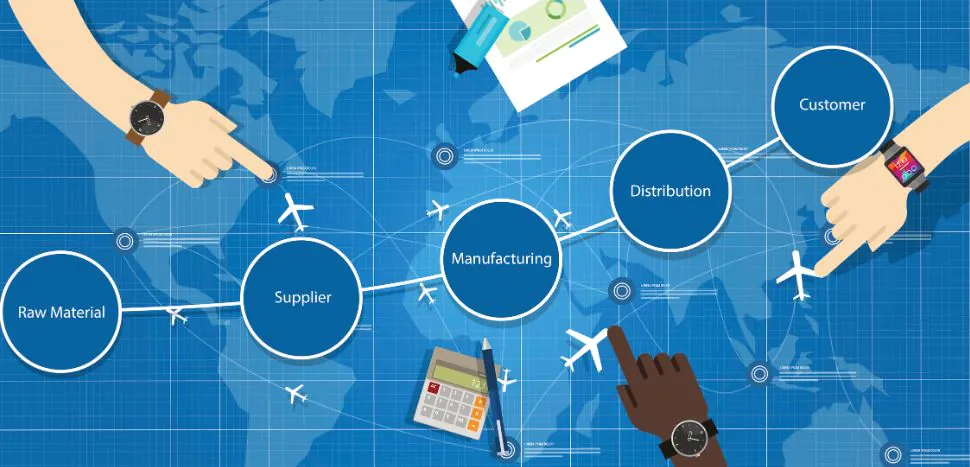Industry 4.0 technologies and practices have become increasingly popular over the past several years, especially in the early years of the pandemic when numerous manufacturers and other businesses were struggling to deal with supply chain disruptions, staff absences due to COVID-19, and new physical distancing regulations and lockdowns. However, apparel manufacturing involves a significant amount of labor that can be difficult to automate, and has therefore been slower to adopt Industry 4.0 (4IR). But as machinery manufacturers develop more advanced equipment and other aspects of 4IR become more pervasive across industries, is it time for the apparel manufacturing industry to take the plunge?
What is Industry 4.0?
Industry 4.0 deals with digitalization and interconnectedness. The Internet of Things (IoT) plays a key role as it connects equipment and systems together, collecting information from sensors for analysis and allowing for the remote operation or automation of everything from factory lights to complex machinery.
4IR includes elements such as big data, analytics, machine learning, and AI to monitor everything from purchasing to manufacturing, sales, and shipping. The data it collects can be used to identify wasted materials, bottlenecks, and other opportunities to make operations more efficient, as well as to find patterns in supply, demand, and production that allow for more accurate predictions about the market. It can also be used to detect product defects faster and more accurately than a human can, and to monitor machine behavior and calculate when to perform preventative maintenance.
All of this makes for higher production levels with leaner staff, or at least the ability to move staff to remote and less physically demanding positions, meaning it becomes easier to find enough workers to keep a factory open and operating at optimal capacity. It also saves money and improves sustainability by reducing waste and making it easier to trace products throughout the supply chain.
Apparel Manufacturing Industry Overview
The global apparel manufacturing industry has had its share of ups and downs over the past several years. In 2021 it had largely recovered from the impacts of the pandemic, but 2022 brought climbing inflation that lead to increases in production costs and a fall in consumer confidence and purchasing power.
Last year, the global apparel industry was valued at $1.53 trillion, and despite continued inflation in some parts of the world, is expected to increase in value over the next few years to exceed $1.7 trillion by the end of 2023 and reach $1.9 trillion by 2027. The US and China are the largest sources of demand for the industry, and China is responsible for the most apparel exports. Women’s apparel generates more revenue than men’s and children’s apparel combined.
There is substantial demand for athletic clothing, from specific sportswear to hunting apparel, workout clothing, and general athleisure wear. According to Statista, the global sports apparel sector is currently generating twice as much revenue as the fast fashion sector, while the luxury clothing sector sits slightly behind fast fashion.
What Are the Challenges of Implementing 4IR Technology?
The apparel manufacturing industry is one where many activities are still done manually, from unloading and placing materials to sewing to the collection of data. Some of these activities can be automated fairly easily, but others are more complex and the technology may not be up to the challenge yet. The cost of implementing new machinery and systems can also be prohibitive to manufacturers running on slim margins, even if the eventual cost savings make up for it over time. Automation is more prevalent in textile production than in textile assembly, as its activities can be more easily done by equipment and robotics.
AI and machine learning (ML) have yet to take hold in the apparel manufacturing industry as they rely on the collection and analysis of data. There is a wealth of data being generated daily, such as sewing output and defect rates, but this information typically isn’t being generated or stored in a way that would make it accessible to AI and ML. On many factory floors, data collection is still done by hand, and it would be time- and labor-intensive to manually enter it into a system that could use it for analysis and prediction. In some cases, machinery can be upgraded to collect and transmit this type of data, but that is difficult or impossible for tasks that are done manually by humans.
Why is so much of this work still being done by hand instead of being automated? The issue is that apparel assembly tends to require a lot of flexibility and precision. It’s difficult to create and program machinery that can work with the wide variety of garments that apparel manufacturers output, and some types of stitching, assembly, and other tasks are too complex for a robot to manage. Simply interacting with fabric can be a challenge: picking up a single sheet of fabric out of a pile can be very difficult for a robot to do without grabbing too much fabric or damaging the material. Machinery requires specifically designed peripherals to do this successfully, and can be time-consuming to set up, making the prospect of automation very expensive.
There has been limited success with fully automating the assembly of a specific type of clothing such as briefs or t-shirts. However, this is currently not practical for anything other than making one type of garment in one style and one size, which doesn’t meet the current needs of apparel manufacturers who work with many different types of clothing and must produce them all in multiple sizes.
How is 4IR Being Brought to the Apparel Manufacturing Industry?
There are some Industry 4.0 solutions that can be implemented despite these challenges, and machinery manufacturers are working to create more precise and capable robots and other devices that can handle the complex activities involved in apparel assembly.
One of the easier ways to automate data collection is through sewing machines using technology such as RFID, NFC, or wi-fi to collect and transmit data from each sewing operator. In this way, some of the work being done manually by humans can still be tracked and analyzed.
Some companies are taking this further by developing more automated sewing machines. While fully automated sewing robots are difficult to scale, there are other ways of introducing robots and automation into the process that reduce the need for human intervention and simplify difficult or dangerous tasks.
One example is a partnership between Jack and Huawei to create a “pick and place” system using a robotic arm that attaches to a pattern sewer. The sewing machine can produce two different designs and is able to recognize which one is needed based on the template placed in front of it. A robotic arm can take a template from one sewing station and place it on another, resulting in one operator being able to monitor three automated sewing machines at once. This saves time and reduces the number of workers needed. Germany-based Robotextile GmbH helped make this possible by developing a range of grippers able to safely pick up most common types of textiles and fabrics and deposit them with precision.
There are many other parts of the apparel manufacturing process that benefit from 4IR technology. CNC cutting machines are used to cut fabrics for garments, and they can be fitted with sensors that capture and transmit useful data about the process and the machines themselves. They are able to determine ways to improve production and detect when the equipment is in need of maintenance. Using precision machinery results in greater accuracy, less waste, and more efficiency.
Fabric inspection is another area where Industry 4.0 can be highly useful. Manual inspection takes time, can result in significant error rates, and is more labor-intensive to document. Using AI-driven technology to detect flaws can reduce defect rates by over 70% and is able to work around the clock, unlike human workers. It can also, like other 4IR technologies, collect and transmit a wealth of data about the process.
Cobots are used to load and unload items, reducing the need for physical labor and the chance of injury. Pressing garments also tends to be a physically intense process, requiring strong workers to do a tiring job. Pressing robots are able to take some of the strain out of the process, cutting down on risks to workers.
There are several other ways to introduce 4IR technology into the apparel manufacturing industry, and more are currently being developed. From design and measuring to finishing, washing, packaging, order management, and supply and demand prediction, Industry 4.0 can benefit manufacturers in many ways. However, building a full smart factory can be very capital-intensive and isn’t always an option.
Fortunately though, a manufacturer does not have to implement every available element of 4IR in order to benefit from it. Introducing data collection or automation in just one or two places can provide significant improvements in efficiency and cost management. It’s important for businesses to identify which investments will have the most impact on operations, such as areas that involve repetitive work and high risks of error. Such improvements can help apparel manufacturers succeed in the face of challenges such as rising costs or a slump in the market.



